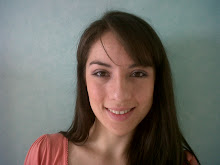A kinetic structure can be design to control sunlight and rain water in an open public space at the same time it reconfigures itself to provide a duality of open and closed space.
Applicable uses:
- Public squares
- Gardens
- Arenas
- Stations
Is it possible to create a 3D structure that can be stable in 3 different configurations* and that at the same time deals with sunlight and rain water control?
*These configurations are: closed, semi open and completely open (hidden).
Subquestions:
About main structure:
- Which kind of structure is more stable for this type of project?
- What is the most efficient way to reconfigure an entire structure?
- What is the exact position for the new configurations?
- What are the mechanical possibilities to achieve a reconfiguration?
- What kind of material is more suitable for this task?
- How can a structure move in order to control light income?
- How can a structure deal with combined needs? (e.i. sun control+ventilation; rain+need of light; rain+ventilation, etc.)
- What kind of materials are available to create this features?
- What kind of material is more suitable to adapt into the structure?
- What are the machanical posibilities to achieve this movement?
Methodology:
- Study the context and the site of the design.
- Search for the reconfigurable structures available
- Select the reconfiguration positions of the structure
- Select the mechanical systems
- Search for materials for main structure
- Modeling of the structure
- Structural analysis in different configurations
- Search for daylight parameters and sun trajectory
- Analysis of combined environmental factors (rain+light+ventilation)
- Search for mechanism to control environmental factors
- Search for materials for secondary structure
- Modeling of the secondary structure
- Light analisys (flux)
Software to be used:
- Structural analisys: Diana
- Daylight income: Ecotect
- Geometry creation: Generative Components

(here the comment previously sent by e-mail due to problems on the blog)
ResponderEliminarHi Perla,
Your research proposal has been quite improved. There will be still some work to do to review it. In order to keep your work going on by integrating the different aspects, I would suggest you to focus in the coming days on the design and computational aspects, by leaving for a few days this text as it is.
[Just a few comments: are you working to identify the best possible system among a range? It seems so from your research questions “Which kind of structure is more stable for this type of project?” “What is the most efficient way to reconfigure an entire structure?” - that suggest in fact a comparison of different alternatives to test which one is the best for stability or other performances.
Or are you going to design a system without comparing its performances with others? In this latter case you make choices to develop your design proposal including retractable and adjustable structures for daylight, but without focusing on the comparison of performances between different systems. (Choices of course need to be motivated also in this case, but identifying the best performances within a range of alternatives would not be the research aim) ]
About your design and computational aspects:
We are going to have a meeting this week, as soon as you recover from your flew. In occasion of that meeting, I think important you present and discuss already a first sketch for your parametric model. In order to do it, please, come with a clear (even if apparently might seem too simple) parametric proposal to represent the problem you are investigating.
Particularly, I think you could extract from your context the information you select as relevant. If you decided to work on the Bologna site, for now, I believe the climate data you have can be enough to define a good context. I would avoid keeping all them into consideration. If you work with daylight, orientation in respect to the position of the sun and buildings on the context (that might affect sunlight on your roof) are for now enough. Beside, you have some data about rain, wind and other that provide you’re a general idea on the climatic conditions of the site: these might be useful if you want to include in the investigations aspects (i.e. needs for rain protection and so on). You do not need to deep investigate the local conditions: for now, I would at the opposite try to simplify the context as much as possible by selecting only what relevant for you.
(The same consideration I think is repeatable for the structural choices. Identifying the best structure/mechanism might be difficult in a so short time since you cannot explore systematically all the possibilities. But you can make choices and limit your exploration to what relevant for your case.)
Start immediately elaborating these information in a parametric approach (if you whish to work with parametric design in GC).
Please, start also working in GC and bring at the meeting a file with your first tries. If you have problems, send it also by e-mail as soon as you encounter them.
Michela